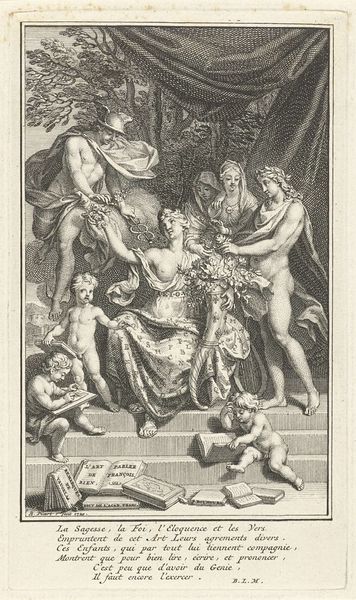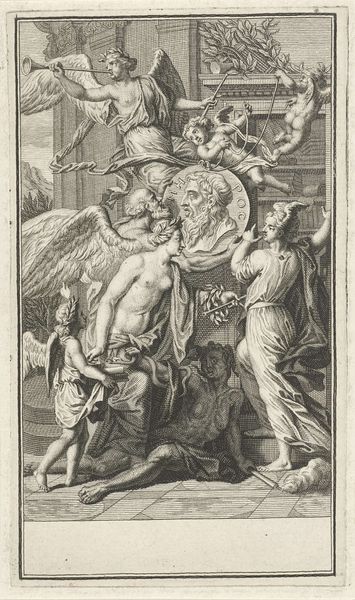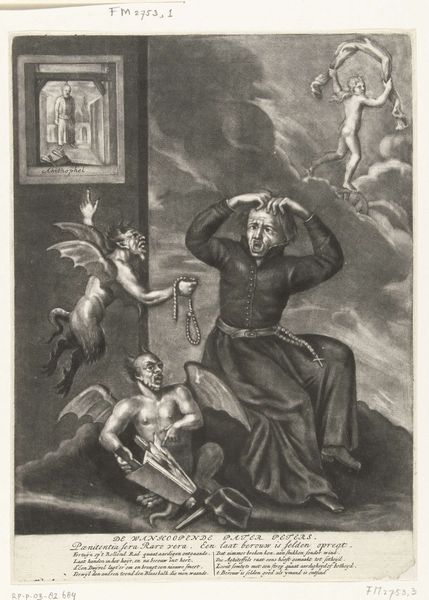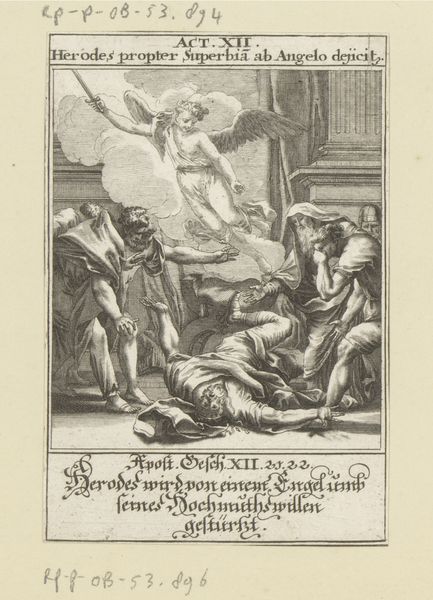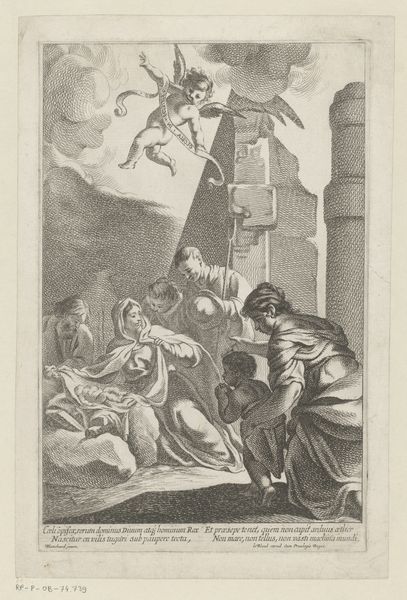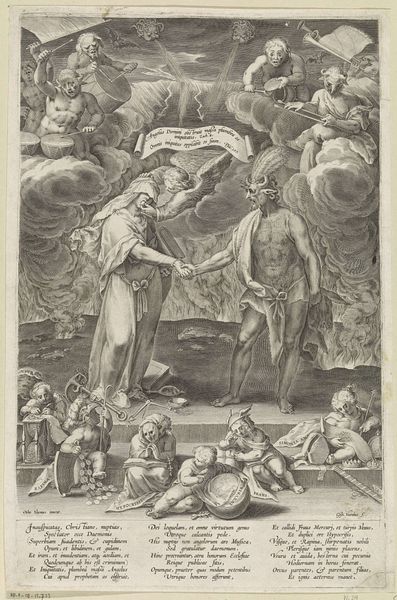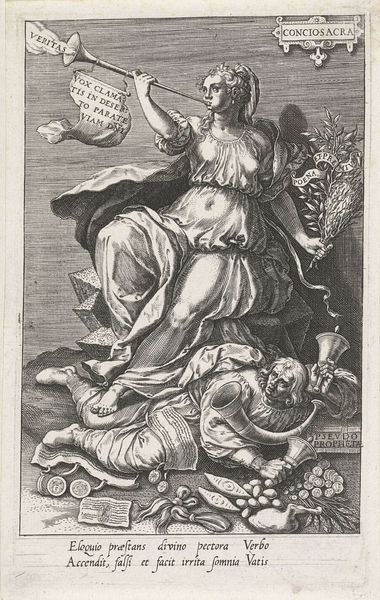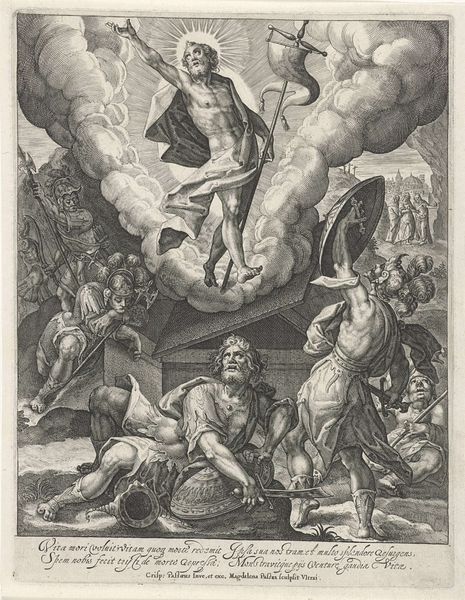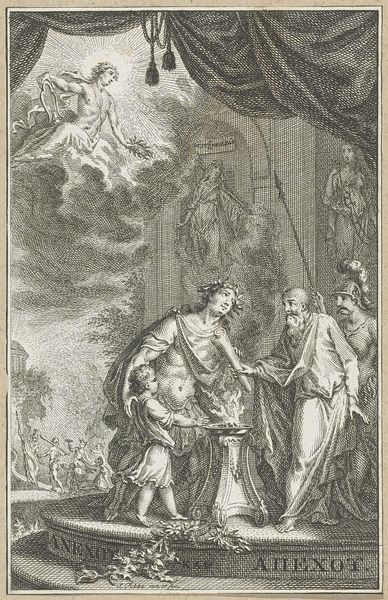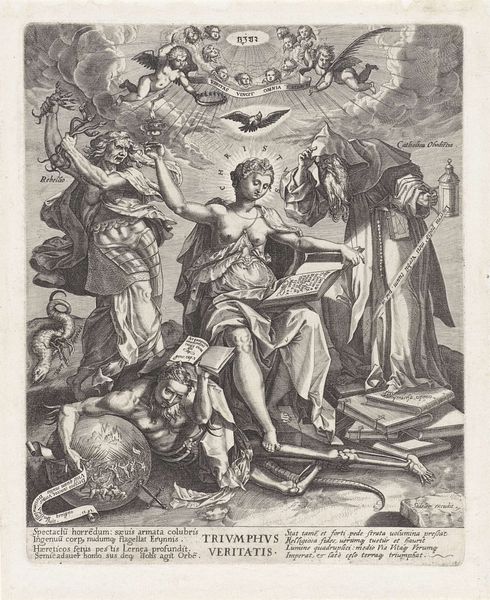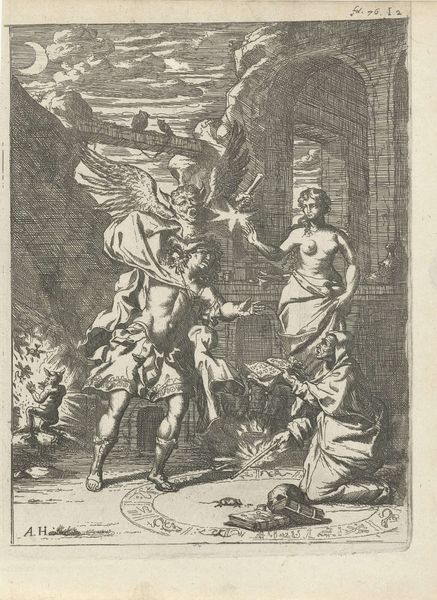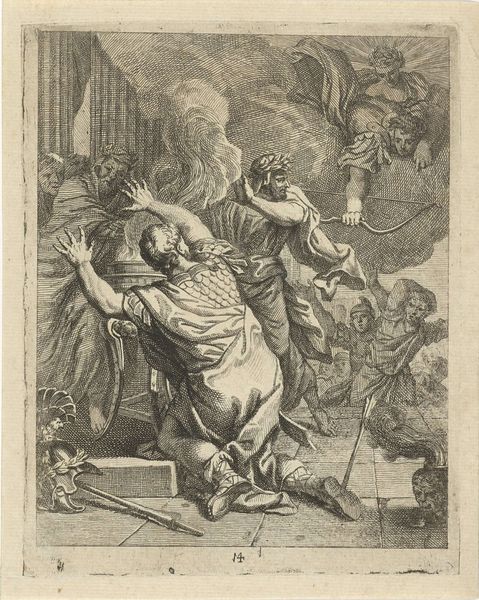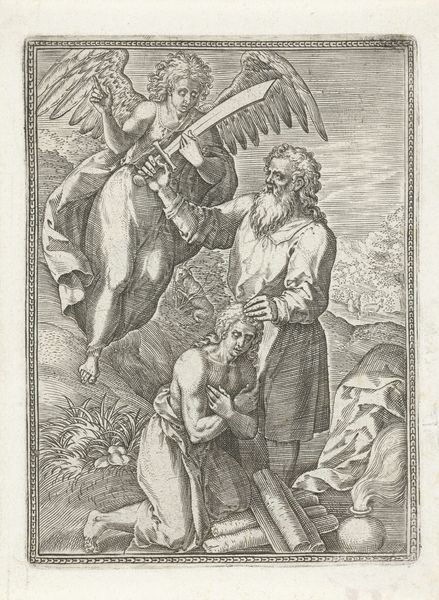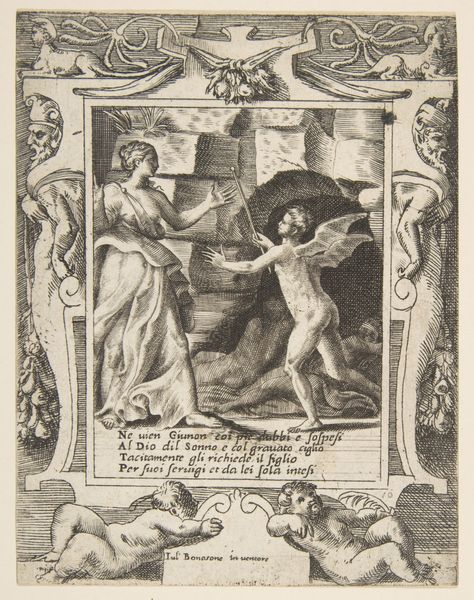
print, engraving
#
portrait
#
baroque
# print
#
old engraving style
#
caricature
#
figuration
#
portrait drawing
#
history-painting
#
italian-renaissance
#
engraving
Dimensions: height 242 mm, width 180 mm
Copyright: Rijks Museum: Open Domain
Curator: Here we have an engraving from before 1612 titled "Marteldood van H. Lucia," or "Martyrdom of St. Lucy," currently held at the Rijksmuseum. It is thought to be the work of Wierix. Editor: My initial reaction is one of unease. The stark contrast of light and shadow heightens the brutality of the scene. There is Lucia, seemingly serene amidst the violence, while these crude figures enact her torture. Curator: Absolutely. The socio-political forces during the Italian Renaissance significantly influenced the prevalence of such martyr scenes. The Catholic Church often utilized images of martyrdom to reinforce faith and project power amidst challenges to its authority. Printmaking, like engraving, allowed for broader dissemination of these images. Editor: Exactly, this act of distribution shapes a collective understanding. The piece actively places Lucia as the visual antithesis to the looming dark figures torturing her. Note the contrast of her bright and smooth skin, haloed in light. These details work hard to portray her as both pure and divinely chosen as they torment her body in her moment of crisis. The sword almost bisects her spiritual light with the material world in its violence. Curator: Consider also how this piece participates in the politics of imagery. It romanticizes Lucia’s death, presenting her as a steadfast symbol of faith for the masses. The surrounding action accentuates the suffering that the faithful will seemingly need to bear if they commit fully to Christ. Editor: But romanticization also obscures the historical realities of such persecution. It flattens the complexity of individual experiences of faith and resistance, reducing Lucia to a symbolic object lessons of loyalty and faith in moments of darkness. What is emphasized and how these visual hierarchies play into it has profound social implications. Curator: These prints served didactic and devotional purposes during that era, and this particular artwork encapsulates a certain spirit and message that persists, shaping historical and contemporary dialogues about persecution, faith, and suffering. Editor: Absolutely, examining this image gives insight to not only what was but offers a context for why and how it has remained and been transmitted into what we consider the present. The history lives in this.
Comments
No comments
Be the first to comment and join the conversation on the ultimate creative platform.
